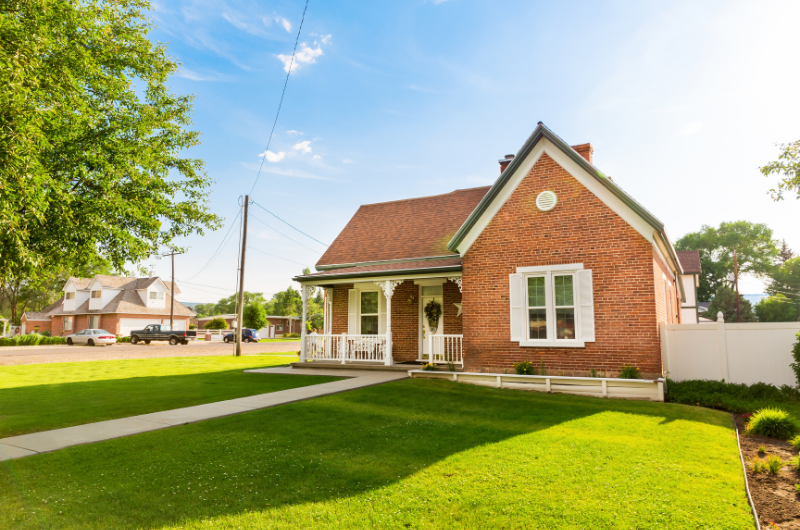When planning home improvements, timing plays a vital role in the outcome — and flooring installation is no exception. With longer days, school holidays, and generally drier weather, summer is often considered an ideal time for home renovation projects across the UK. But is it truly the best time to install new flooring?
In this article, we explore the advantages and potential drawbacks of installing flooring during the summer months, particularly with the unique demands of British homes in mind. We’ll also touch on how temperature, humidity, and seasonal deals can influence your decision — and provide a brief timeline for what to expect during installation.
Benefits of Summer Flooring Installation
1. Stable Indoor Temperatures Help Certain Flooring Types
One of the key advantages of summer is the relatively stable indoor temperature. Materials such as solid hardwood, engineered wood, and laminate flooring are particularly sensitive to temperature changes and perform best when acclimatised to a consistent indoor environment. During the warmer months, homes typically maintain a more even temperature throughout the day and night, reducing the risk of expansion and contraction after installation.
This makes summer a practical time for installing these types of flooring, as it allows the materials to settle properly and minimises the risk of warping, buckling, or gapping over time.
2. Lower Indoor Humidity (Sometimes!)
Humidity is an important — and often overlooked — factor when installing flooring, especially wooden options. While British summers can occasionally be muggy, many homes experience reduced indoor humidity compared to the winter, when condensation and central heating can create overly moist or dry environments.
Opening windows, using fans, and natural ventilation during the summer months can help maintain moderate humidity levels. For wood flooring, it’s ideal to keep indoor humidity between 45% and 65%. A simple hygrometer can help monitor this, ensuring conditions are just right for installation.
3. Longer Days and More Flexible Scheduling
With extended daylight hours and school holidays, summer provides homeowners with more flexibility when planning renovations. Installers can work longer hours without being restricted by darkness, often completing projects more quickly.
In addition, families often plan summer holidays, which can be an ideal opportunity to have flooring installed while the house is unoccupied. Returning to a freshly renovated home can make your summer break even more worthwhile.
4. Seasonal Discounts and Sales
Retailers and installers frequently run summer promotions, particularly during May bank holidays, end-of-financial-year clearances, and mid-season sales. These deals can include discounts on flooring materials, underlay, accessories, or labour costs.
If you’ve had your eye on a premium flooring product, summer might be the time to snap it up at a reduced price. Just be sure to check availability early, as popular styles can sell out quickly during promotional periods.
Potential Drawbacks to Consider
1. High Demand Means Less Availability
Summer is one of the busiest times of year for tradespeople, including flooring installers. With many homeowners choosing to tackle renovations while the weather is good and the kids are off school, you may find that reputable fitters are booked weeks in advance.
To avoid disappointment, it’s wise to plan your project well in advance — ideally by late spring — to secure your preferred installation dates.
2. Occasional High Humidity Can Still Affect Wood Floors
While summer generally brings more favourable conditions, UK weather can still be unpredictable. Prolonged periods of heat and humidity, particularly in poorly ventilated areas, can cause natural flooring materials to swell or cup if not properly acclimatised.
Ensure your flooring is stored in the room where it will be installed for several days prior to fitting. This allows it to adjust to the environment and reduces the risk of future issues.
A Typical Installation Timeline
The duration of your flooring installation will depend on several factors — including the size of the space, the type of flooring, and whether any subfloor preparation is required. Here’s a rough guide:
- Day 1–2: Delivery and acclimatisation of materials (especially for wood or laminate).
- Day 3: Removal of existing flooring (if needed) and subfloor preparation.
- Day 4–6: Installation of new flooring.
- Day 7: Finishing touches, including skirting boards, trims, and clean-up.
In total, expect a typical domestic installation to take 5 to 7 days, though smaller projects or quicker materials like click-lock vinyl may be completed in less time.
Final Thoughts
So, is summer the best time to install new flooring in the UK? For many homeowners, the answer is yes — thanks to more predictable weather, better indoor conditions, and the potential for savings. However, it’s not without its challenges. High demand and occasional humidity spikes mean that careful planning is key.
If you’re considering a flooring update this summer, now is the perfect time to get quotes, review options, and book your installer before the season gets fully underway.
Would you like me to provide a downloadable version (e.g. PDF or Word) or format this as an HTML blog post for web upload?




